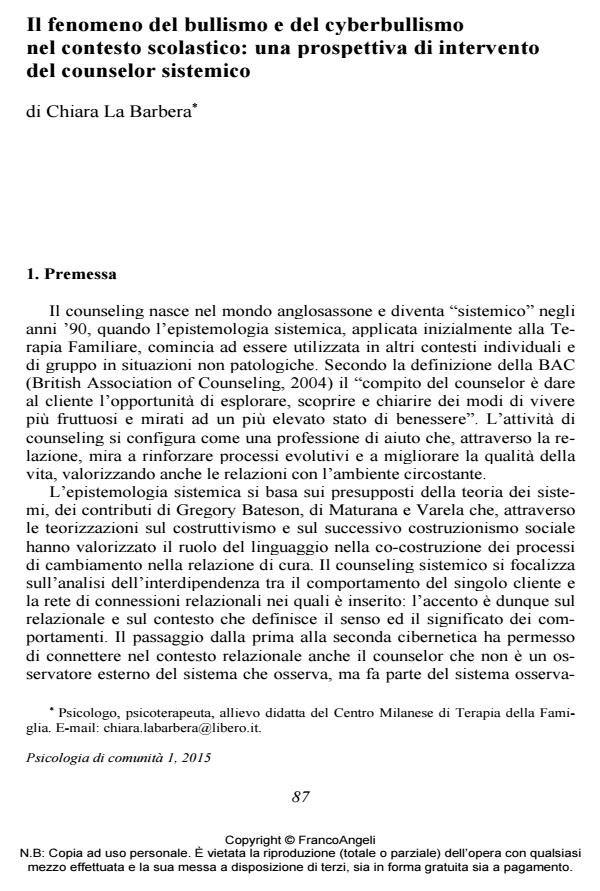Bullying and cyberbullying in the school: a perspective of intervention for the counselor systemic
Journal title PSICOLOGIA DI COMUNITA’
Author/s Chiara La Barbera
Publishing Year 2015 Issue 2015/1
Language Italian Pages 8 P. 87-94 File size 38 KB
DOI 10.3280/PSC2015-001009
DOI is like a bar code for intellectual property: to have more infomation
click here
Below, you can see the article first page
If you want to buy this article in PDF format, you can do it, following the instructions to buy download credits

FrancoAngeli is member of Publishers International Linking Association, Inc (PILA), a not-for-profit association which run the CrossRef service enabling links to and from online scholarly content.
In the present paper the author proposes an action model of intervention for the prevention of the phenomenon of bullying at school that has the objective to create, in a school context, a policy anti-bullying which, starting from the experience of peer education can give voice to the thought "positive" of young people and help to involve adults in a process of auto reflectivity than product, showing them the skills of youth and their mode of communication and involving the local community in terms of spreading the message of collaboration and cooperation. This also allows to create an intervention that challenge the linear model of the systems of prevention and treatment that focuses on the support to the "bully designated" and "bulling victim" by moving the intervention on systemic dimension of context as a matrix of meanings that activate some behaviors inhibiting others.
Keywords: Counseling, systemic epistemology, bulling, cyberbulling, prevention, school.
Chiara La Barbera, Il fenomeno del bullismo e del cyberbullismo nel contesto scolastico: una prospettiva di intervento del counselor sistemico in "PSICOLOGIA DI COMUNITA’" 1/2015, pp 87-94, DOI: 10.3280/PSC2015-001009